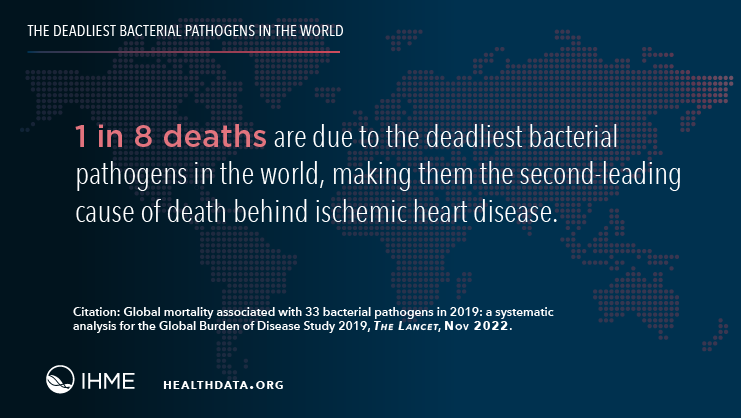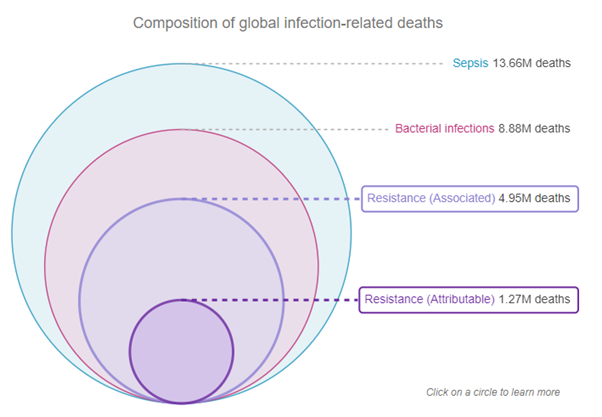Since 2019, Fleming Fund grantee, International Vaccine Institute (IVI), has led the CAPTURA consortium to expand the volume of historical data for antimicrobial resistance (AMR), consumption (AMC), and use (AMU) across 12 countries in South and Southeast Asia.
New data visualisation tool launched by Global Research on AMR project provides new insights into AMR globally
Insights into the country level AMR burden data available for first time.
The Global Research on AMR (GRAM) project, made up of the Institute for Health Metrics and Evaluation (IHME) and University of Oxford, have released a new visualisation (‘viz’) tool.
The Viz Tool shows data from multiple data sources, including from published studies (such as microbiology data, inpatient data, data on multiple causes of death, and pharmaceutical sales data) and directly from collaborators on the GRAM project, 15 members of the GBD Collaborator Network, and other data providers. It uses data modelling to produce estimates for 204 countries and territories.
The tool illustrates AMR burden as graphs and other visuals, making it easier for the AMR community, researchers and policy makers to interpret findings. It is the first of its kind to show global estimates on the burden of antibiotic resistance. It includes data filters for country, age and sex.
This tool has been released alongside a new pathogens paper from the IHME-Oxford partnership, published in the Lancet yesterday. The paper revealed that 7.7 million deaths (one in eight) in 2019 were linked to common bacterial infections, second only to ischaemic heart disease as the leading cause of death.

This builds upon an earlier GRAM paper published in January, which estimated that 4.95 million deaths were associated with antimicrobial resistance (AMR) in 2019. Of these deaths, 1.27 million were directly attributable to AMR.
Background: Attributable death means that people died from a drug-resistant infection, and deaths associated with AMR include people who had a drug-resistant infection when they died (but this may or may not have been the cause of death).

A screenshot from the Viz Tool, showing the composition of global infection-related deaths as a visual.
Authia Gray, study co-author and Post-Bachelor Fellow at IHME at the University of Washington’s School of Medicine, said:
“Until now, country-level estimates for parts of the world where people are worst affected by bacterial infections have been noticeably absent. These new data could act as a guide to help address the disproportionately high burden of bacterial infections in low- and middle-income countries and may ultimately help save lives and prevent people losing years of their lives to illness.”
Phase I of the Fleming Fund focused on strengthening AMR surveillance systems by increasing diagnostic laboratory capacity and producing high-quality, robust data. Phase II will build upon this progress by facilitating the use of data to inform policy interventions – highlighted as a global health necessity from the report’s analysis.
These stark findings have been emphasised by the new Viz Tool, demonstrating the true extent of AMR burden across the 204 countries and territories. The tool is expected to greatly aid researchers and policy makers in interpreting data, spurring further studies on the global burden of AMR. More research is vital for encouraging national, regional and global policymaking to tackle the silent pandemic of AMR.
More Like This
Studies & Reports
From Studies & Reports, Case Study: Pakistan’s first ‘antibiotic footprint’ analysis , Date: 09/08/2024
Just like our carbon footprint monitors the global environmental impact of harmful greenhouse gases, we also need to track our antibiotic footprint to contain and reduce the effects of drug resistance.